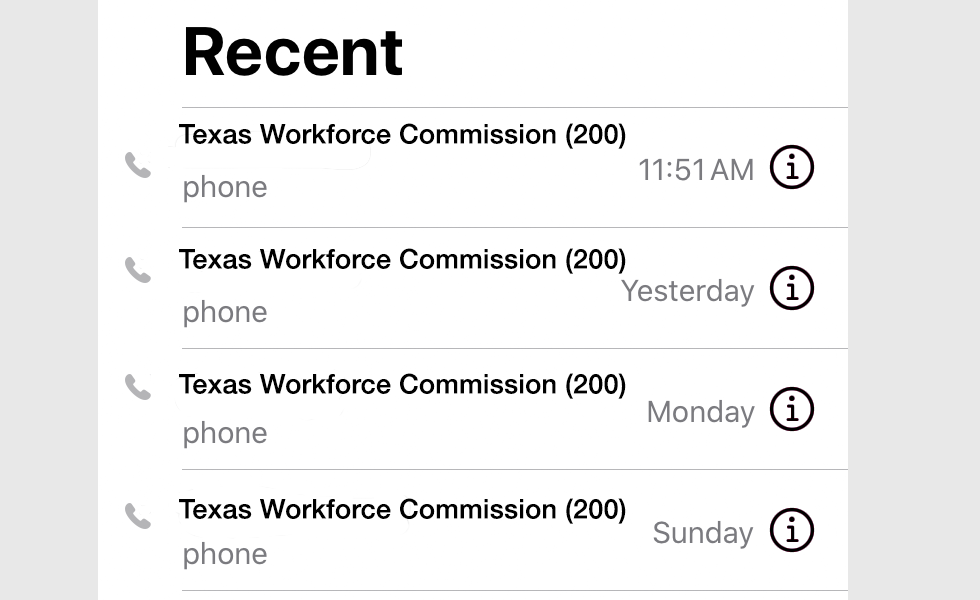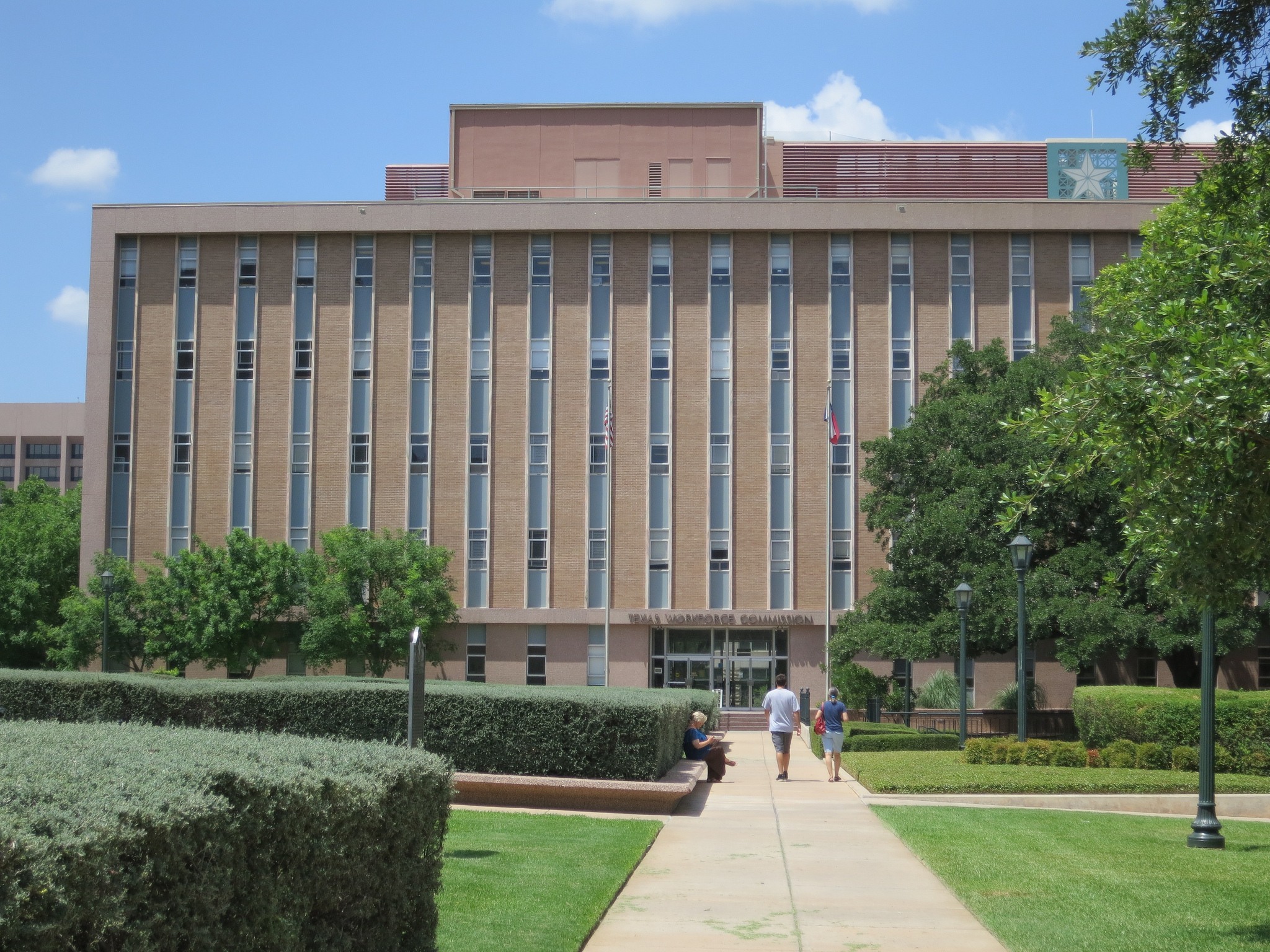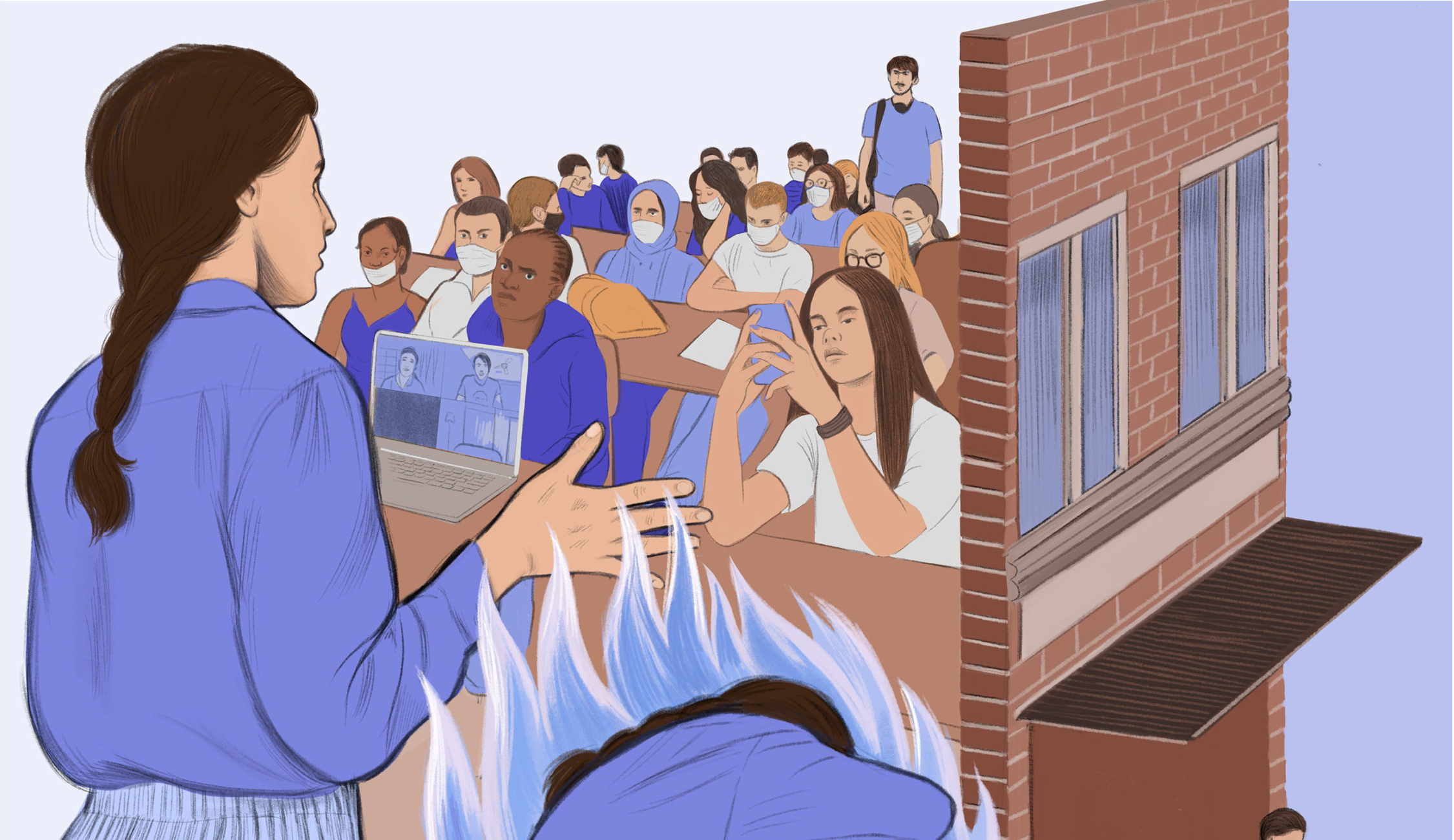
Five Months Later, the State’s Unemployment System is Still Broken for Many Texans
The state’s unemployment insurance system was woefully unprepared when the COVID-fueled economic crisis hit in March. Months later, unemployed Texans are still struggling to get—and keep—their benefits.

In March, after losing her job with Rolfson Oil, Laura Orozco filed for unemployment. Her claim was denied. The Texas Workforce Commission (TWC), which administers the state’s unemployment insurance system, said that based on the agency’s formula, she hadn’t earned enough income to be eligible. To Orozco, who lives in the Gulf Coast town of Victoria with her husband and four children, this appeared to be a blatant mistake—she was earning a $65,000 salary and had been making as much at her prior job. She quickly filed an appeal. A TWC representative got in touch with her in May and agreed that it looked like a mistake, saying she’d expedite the case. That was the last time Orozco talked to anyone at the agency about her claim.
“I’ve sent countless emails, countless phone calls,” she says, but still hasn’t received a response.
Over the past five months, the recording of a nameless woman’s distant, tinny voice on the TWC’s unemployment hotline has become an all-too-familiar, dreaded sound to desperate out-of-work Texans like Orozco: “Due to the overwhelming call volumes as a result of the ongoing pandemic, we are unable to take your call at this time.” The line then disconnects.
Without any benefits to help cover the loss of her income, her family is forced to rely solely on her husband’s income to pay for groceries, clothes, bills, and other necessities. She says it’s hell. “Everything is a balancing act with four kids at home,” she says. “And we do not qualify for state assistance so we’re completely on our own.” On top of that, one of her children has special needs and the struggle to afford his expensive medications has been “absolutely brutal.”
Before the pandemic hit, TWC leadership knew that the existing unemployment insurance system was in dire need of an overhaul. The safety net for the state with the second largest workforce in the country, runs on antiquated mainframe computers from the 1990s and a near-extinct programming language. But when the coronavirus pandemic sparked the worst unemployment crisis in Texas history, the state was entirely unprepared.
In the five months since COVID-19 arrived in Texas, TWC has scrambled to patch up the unemployment insurance program’s woefully outdated computer systems. The agency has spent more than $21 million on contracts with companies to hire on some 1,000 additional workers to help handle the surge of incoming calls to the agency’s hotline, according to figures provided by TWC. As well, the agency has extended contracts with AT&T, Accenture, Trellis, and OneSupport through October, for an estimated total cost of at least $51 million. But to many Texans who are still essentially locked out of the unemployment system, the Texas labor agency seems to be just as overwhelmed and inept at handling claims as it was at the beginning of the pandemic.

In April, the agency was actively soliciting bids to replace the entire unemployment insurance system’s dilapidated technology with a modern, user-friendly, cloud-based system–one fit for the 21st century. But as the economy shuttered and a massive surge of unemployment claims flooded in, TWC was forced to abandon its plans for modernization and scramble to update the current system. The technological equivalent of duct tape and baling wire, and as the months stretch on, Laura Orozco has grown furious with the agency and Texas leaders. “Why are you doing this to us and countless other families? How can you stand by ignoring emails literally pleading for help? Why do Texan families not matter?” she says.
When TWC has an issue or disputes a claim, the agency sends a notice directing the claimant to call in. But many claimants say it’s still nearly impossible to get through to someone on the hotline, and if they’re given a specific phone number for an agency representative, some have reported that they never answer and the voicemail is full. Texans who succeed in getting through to a live person—frequently after sitting on hold for hours—report being transferred multiple times, or find that additional contract workers are only able to help file initial claims and can’t resolve problems with existing claims. Others claimants report being hung up on. TWC says contract workers are trained to handle basic claims in order to free up TWC employees who are trained to resolve more complex cases, when they can be reached.
Nearly 4.3 million Texans have filed unemployment claims since mid-March, a level of demand that the agency says amounts to the sort of demand it would see over the course of six typical years. The agency says it has reduced the average hold-time for hotline callers from 26 minutes in April to 12 minutes in July, however, the number of times that people who have abandoned their calls each day has nearly doubled from an average of 1,416 in April to 2,651 in July.
Asked whether TWC has done enough to handle the crush of claims coming in, the agency referred the Observer to a recent interview with NBC5 in Dallas, in which TWC Executive Director Ed Serna defended his agency’s handling of the crisis. “To the folks that say we’re not doing enough, if you have ideas on other things we can do, I’ll listen to anybody’s idea,” he said. In the interview, Serna claimed he understood peoples’ frustrations with long wait-times, unresolved claims, and delayed benefits, but insists that the TWC is doing all it can in the face of an unprecedented unemployment spike.
“It’s hell. Everything is a balancing act with four kids at home. … And we do not qualify for state assistance so we’re completely on our own.”
But those actions haven’t assuaged the stress for many unemployed Texans. Social media posts provide a real-time chronicle of the widespread problems and deep anxieties as people, many encountering the state’s unemployment system for the first time, struggle to secure and maintain their benefits.The comment sections on the agency’s Facebook page are filled with anecdotes from the desperate and unemployed, along with plenty of fury and frustration aimed at TWC.
“Y’all are a joke. We’ve been doing our payment request on our scheduled day every two weeks. But we haven’t gotten a payment since the 21st [of July] and now our bills are late,” wrote Megan, who posted the comment and asked that her last name not be used. Megan told the Observer that her husband was laid off because of the pandemic back in March and began trying to file a claim. They were not approved until June. Then, the payments suddenly stopped coming in late July. This week, they received a letter in the mail from TWC explaining that their benefits had been cut off because they had not called the automated system on their scheduled day to request payment, as is required every two weeks. The couple have two kids and another on the way.
Unable to get help from the agency, many Texans have turned to a Facebook group called Texas Unemployment Update to crowdsource their problems with TWC and the unemployment process. The group has grown to nearly 20,000 members.
As of July 25, nearly 225,000 of the 3.1 million total claims filed since the COVID pandemic hit in March are still awaiting decisions, according to data provided by TWC.
The agency says that the average turnaround time to process a claim is three weeks, but could take longer depending on several factors, including whether the employer has responded to the claim, why someone lost their job, and if the person has earned wages in more than one state.
Another colossal problem heaped on the state’s unemployment system at the end of July: About 1.3 million Texans—nearly 10 percent of the state’s workforce—were receiving federal unemployment aid of $600 a week on top of state benefits, which averages about $350 a week. But that lifeline was cut off nearly a month ago after Congress failed to strike a deal to extend the relief before leaving for recess. Now the critical lifeline, which put nearly $820 million a week in the pockets of Texas’ unemployed and buoyed the economy, is gone and there is no sign that Congress will strike a deal anytime soon.
Meanwhile, President Trump issued a legally dubious executive order that would use FEMA disaster funds to provide $300 weekly benefits for a limited period of time, while giving state governments the option to provide an additional $100 per week. Last week, Governor Greg Abbott applied for $7.2 billion in additional federal unemployment aid, but was approved only for $1.4 billion; Abbott declined to finance the optional state supplement of $100 a week. But, he said that the supplemental benefits will be backdated to August 1 and recipients should expect to receive them on their first payment request on or after the 23rd.
But Laura Orozco and her family are still waiting. She’s one of the roughly 500,000 denied claims in the state and the appeals process for her, and others, is long. Per federal standards, TWC is required to issue decisions for 60 percent of appeals within 30 days. After 45 days, they’re required to issue decisions for 80. The agency provided figures for March and April that show it met those standards, but did not provide data from more recent months. In April, just over 14,000 appeals were filed, according to the agency’s figures. In that month, TWC issued decisions on 8,748 cases, with just 25 percent going in claimants’ favor.
Read more from the Observer:
-
Texas Already Lacked Affordable Child Care. Then COVID-19 Hit: The coronavirus has temporarily or permanently closed almost half of all child care providers in the state, leaving few options for low-income working families.
-
Marsha Jackson Is Trying to Move Shingle Mountain: The illegal dump is southern Dallas’ most visible environmental justice crisis. It’s far from the only one.
-
A New Study Finds a Link Between Flaring and an Increase in Premature Births: In the Eagle Ford Shale, a study found that pregnant, Latina women were more likely than white women to give birth prematurely.


